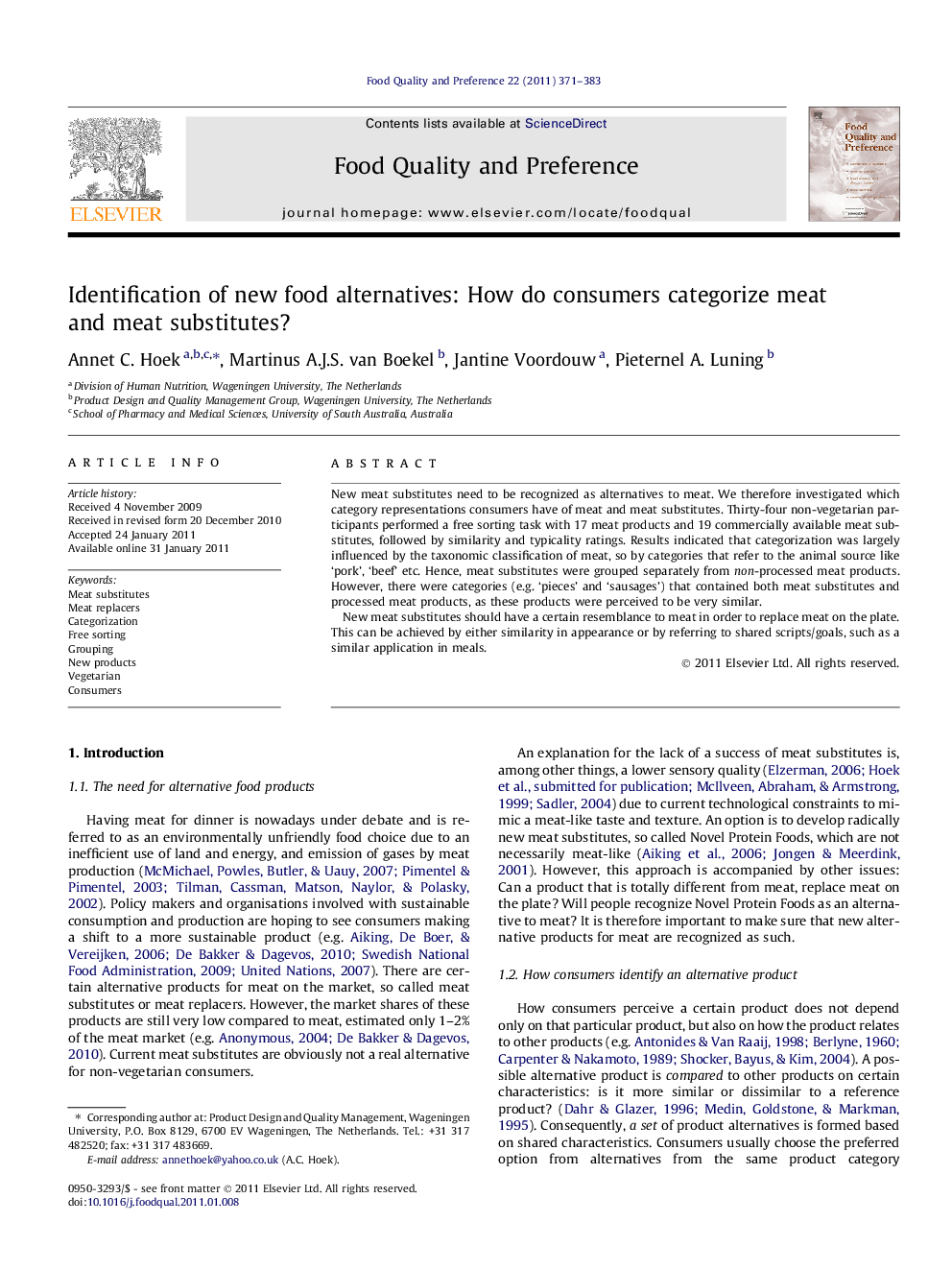| Article ID | Journal | Published Year | Pages | File Type |
|---|---|---|---|---|
| 4317637 | Food Quality and Preference | 2011 | 13 Pages |
New meat substitutes need to be recognized as alternatives to meat. We therefore investigated which category representations consumers have of meat and meat substitutes. Thirty-four non-vegetarian participants performed a free sorting task with 17 meat products and 19 commercially available meat substitutes, followed by similarity and typicality ratings. Results indicated that categorization was largely influenced by the taxonomic classification of meat, so by categories that refer to the animal source like ‘pork’, ‘beef’ etc. Hence, meat substitutes were grouped separately from non-processed meat products. However, there were categories (e.g. ‘pieces’ and ‘sausages’) that contained both meat substitutes and processed meat products, as these products were perceived to be very similar.New meat substitutes should have a certain resemblance to meat in order to replace meat on the plate. This can be achieved by either similarity in appearance or by referring to shared scripts/goals, such as a similar application in meals.
Research highlights► Consumers’ choice between alternative products involves categorization. ► We investigate the category representations of meat and meat substitutes. ► Taxonomic classification is dominant, which refers to the type of animal source. ► The principal animal/vegetable division disappears with processed products. ► Meat substitutes should resemble meat in appearance or refer to shared scripts/goals.
